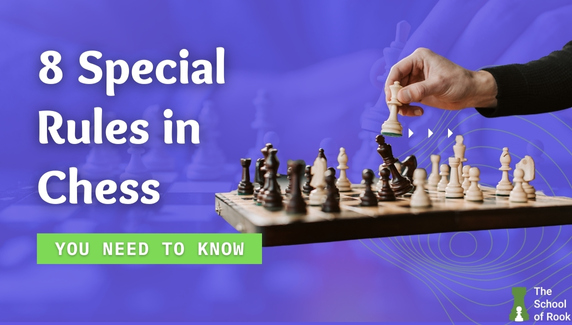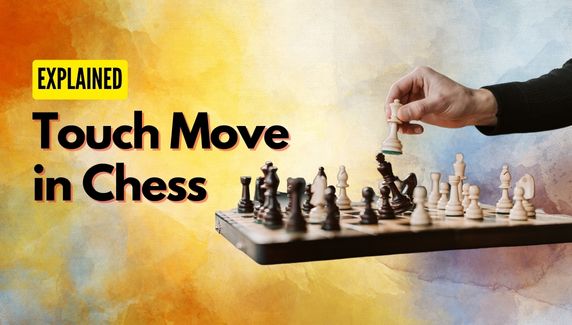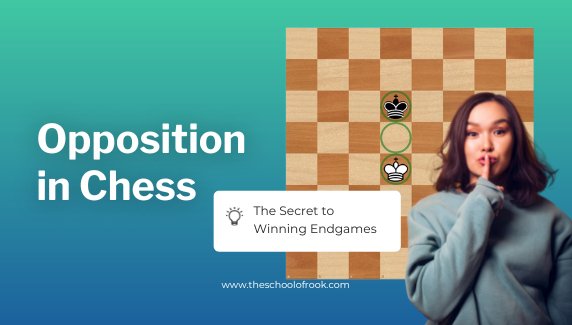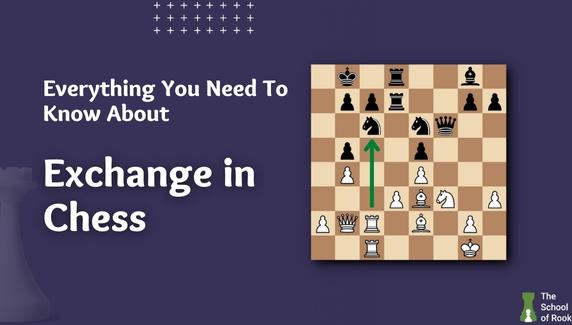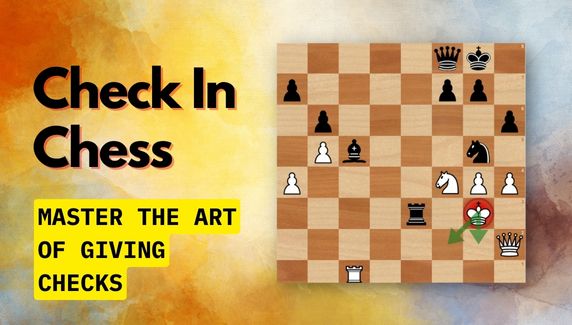
If you’ve ever been confused about giving a check in a game of chess, you’ve come to the right place!
A “check” occurs when you attack your opponent’s king using your pieces.
To win a game, you need to understand what a check is and how to give checks properly to checkmate your opponent.
In this article, I’ll provide all the information you need to know about a check in chess 一 from basic concepts to advanced strategies.
What is a check in chess?
“Check” refers to a situation in chess where a player’s king is under attack by one or more of their opponent’s pieces.
Here’s an example of a check in chess:
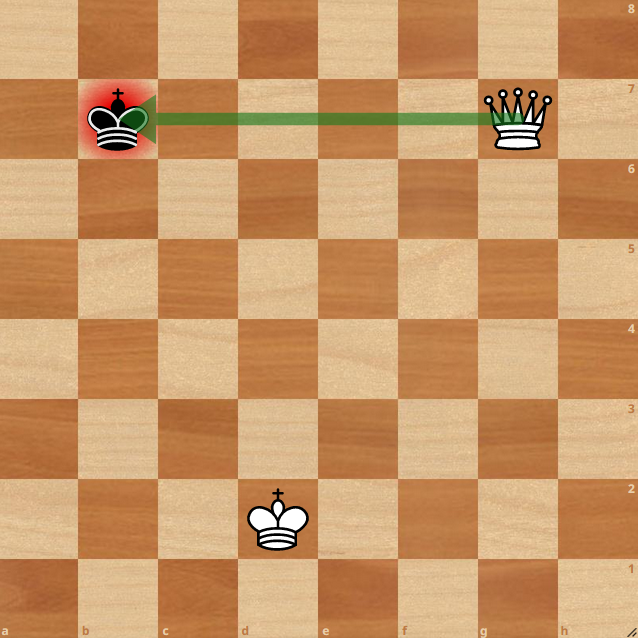
Here, the White queen is giving a check to the Black king.
Players can give a check multiple times during a game. That’s why you need to be aware of potential checks and try to prevent them when making your own moves.
Check is an important concept in chess because it puts pressure on the player whose king is under attack to respond. It is also used as a tactical tool to force the opponent to make a particular move or to expose a weakness in their position.
Let’s look at another example where a check is used as a tactic in chess:
Black plays Qb8 to give a diagonal check to the White king. Since the White king cannot move to g1 and h1 squares, thanks to the Black rook, it plays Qg3 to block the check.
Black gives another check by playing Rh1. Now, the White king has to capture the free rook since it has no other place to move. Black then captures the White queen and White resigns.
Now what if the player whose king is in check has no legal moves that can get the king out of check? The game is said to be “checkmate,” and the player with the attack wins the game.
How do you write “check” in chess?
“Check” is indicated by placing the symbol “+” after the move that gives check in algebraic notation.
For example, “Bf3+” would indicate that the bishop moves to f3 and gives a check.
How to get out of check?
When the king is in check, the player whose king is under attack can respond by either of the following options:
- Moving the king to a safe square.
- Capturing the attacking piece.
- Inserting a piece between the attacking piece and the king.
Here are three examples to show you how to escape, capture, and block a check.
Escape a check
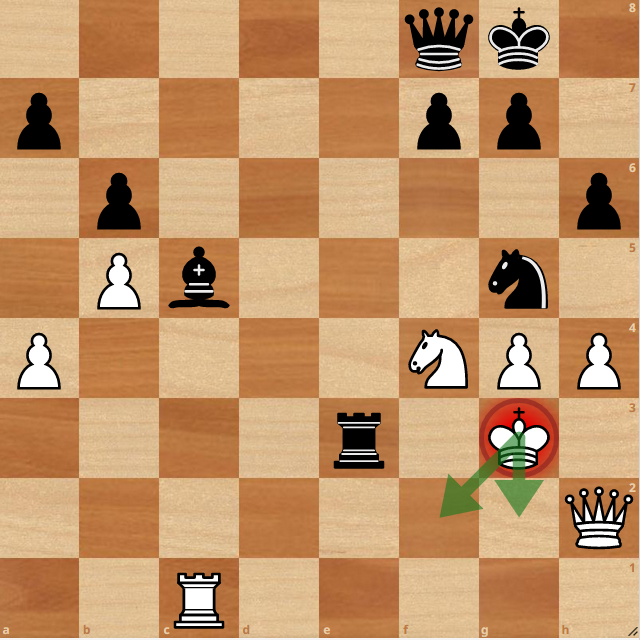
Black gives a check by playing Re3+. White has no other option but to move its king to g2 or f2 square.
Capture the checking piece
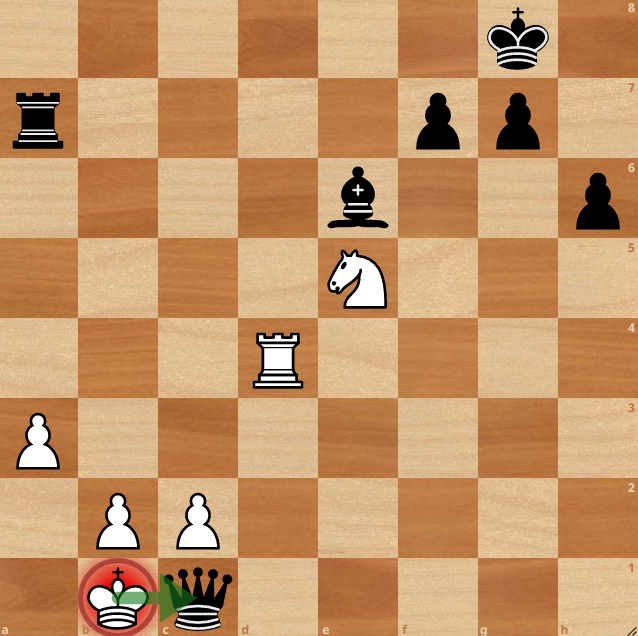
Black gives a check by playing Qc1. But the queen has no support from its team.
So White simply captures the Queen by playing Kxc8.
Block a check
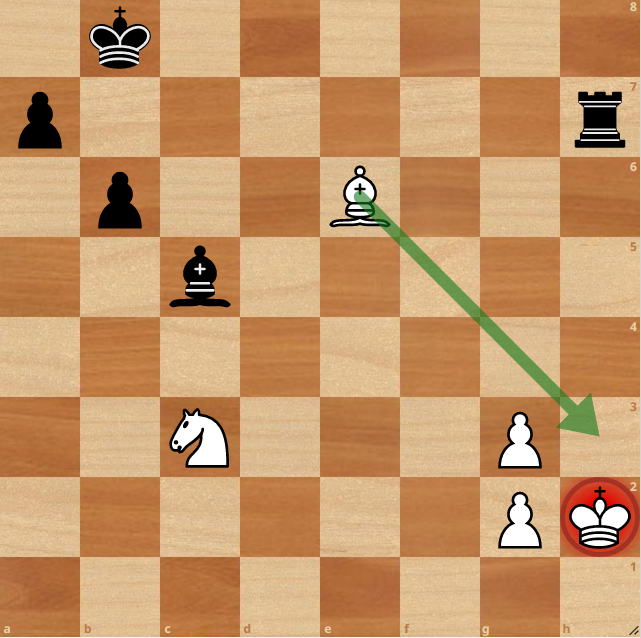
Black gives White a check by playing Rh7+. Now, White can’t move to h1 square because the black Rook is attacking that square. Similarly, the White king can’t move to g1 square because of the Black bishop on c5.
To stop the check, White plays Bh3 and successfully blocks the rook check.
What if you cannot get out of check?
If your king is in check and has no legal moves to get out of check, the game is said to be “checkmate,” and your opponent wins the game.
Here’s what a checkmate looks like:
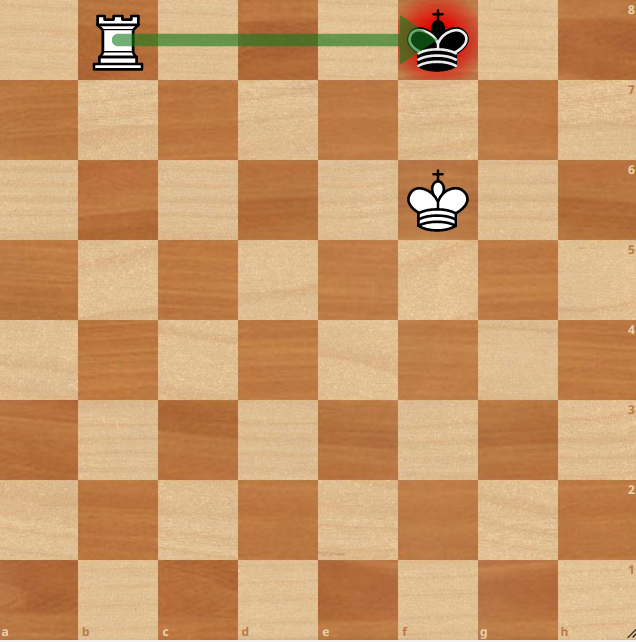
White gives a check by playing Rf8+. Black king can’t capture, block, or run away from the check, resulting in a checkmate.
Types of check in chess
There are four main types of check: discovered check, double check, cross check, and perpetual chess.
Discovered check
A discovered check in chess is when one piece moves out of the way so the other piece can deliver a check.
The concept of discovered checks is quite simple: a player moves a piece, and as a result of that move, the path of the piece behind it is unblocked, allowing it to give a check to the opponent’s king.
Here is an example of a discovered check:
If White moves the rook on the b5 square, it unblocks the path of the White queen to give a check to the Black king at the b8 square.
After the Black king moves, the White rook captures the Black queen.
As you can see from the above example, discovered checks can be a powerful tactical tool. Black was caught off guard and had to loose its queen in order to save its king.
So a discovered check also forces your opponent to respond to the check and expose a weakness in their position.
Double check
A double check in chess is when two pieces give a check at the same time.
Double checks almost always involve a discovered check, where a piece moves to give a check and unblocks the path of a second piece giving another check.
Let’s see an example here:
White knight moves to the b6 square to give a double check as well as a discovered check.
A double check is a powerful tactic since:
- It cannot be blocked. If you stop one check, there’s still another check on your king.
- The pieces giving a check cannot be captured in a single move. This is unless the king itself makes the capture.
Therefore, a double check forces the king to make a move.
Note: “Double check” is noted by placing the symbol “++” after the move that gives a double check. However, “++” is also used for checkmate (along with #).
Cross-check
A cross-check in chess is when a player stops a check on its own king and gives a check to the opponent at the same time.
A cross-check is used to deflect an opponent’s attack on the player’s own king and create counterplay.
It often results in one piece being captured and removed from the board. This can be a very effective move as it eliminates one of your opponent’s pieces while also putting their king into check.
Here’s a cross-check example:
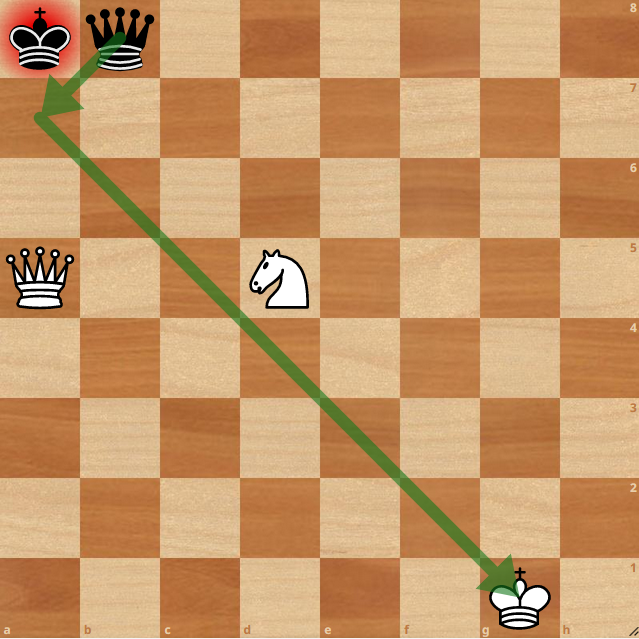
Black blocks White’s check by placing its queen in between the Black king and the White Queen. By playing Qa7, Black gives a check to the White king at the g1 square.
Perpetual check
A perpetual check in chess is when a player continually checks their opponent’s king, without letting them move it out of danger.
Perpetual check situations occur when one side is unable to force a win and instead chooses to keep their opponent’s king in check.
So if both players make the same set of moves three times each, then a draw will result due to a lack of progress being made on either side.
White is threatening a checkmate by playing Qg7. Since Black is a piece down, it aims for a draw by playing Qd1+.
White king has no other option but to move to Ka2. Black again gives a check by playing Qa4+. White king moves to b1 square again and the cycle repeats, resulting in a draw.
Can kings check other kings?
Kings cannot directly attack or capture each other in chess.
This is because a king cannot move into an area where it would be vulnerable to attack by the other player’s pieces.
Do you have to say “check” when giving a check?
You don’t need to say “check” when giving a check to your opponent’s king.
Players were expected to announce “check” until the early 20th century. But it’s no longer required.
Some consider it good sportsmanship to inform the opponent when their king is in check. This is because it helps to ensure that the game is played fairly and allows the opponent to see the potential threats on the board.
But some believe that saying “check” is bad etiquette since it can disturb your opponent and the players playing near you.
So what do you do when your opponent makes an illegal move because they overlooked the check? If you’re playing in a tournament, you can stop the game, call the arbiter, and tell them about the illegal move.
What is the difference between “Check” and “Checkmate”?
Check in chess refers to a situation in which the opponent’s king is threatened with capture by one of the player’s pieces. When a player’s move puts the opponent’s king in check, the opponent must either move the king to a safe square, capture the attacking piece, or block the attack with another piece.
“Checkmate,” on the other hand, refers to a situation in which the opponent’s king has no legal move and is in danger of being captured on the next move. When a player achieves a checkmate, the game is over, and the player who achieved the checkmate wins.
Final thoughts on check in chess
It is clear that a check in chess is one of the most important aspects of the game that each player must be aware of.
Knowing how to recognize and respond to a check can be the difference between winning and losing. It’s also a great way to put your opponent in a difficult position.
Remember, always keep your king safe. Never be too busy in giving checks that you forget to protect your own king!

